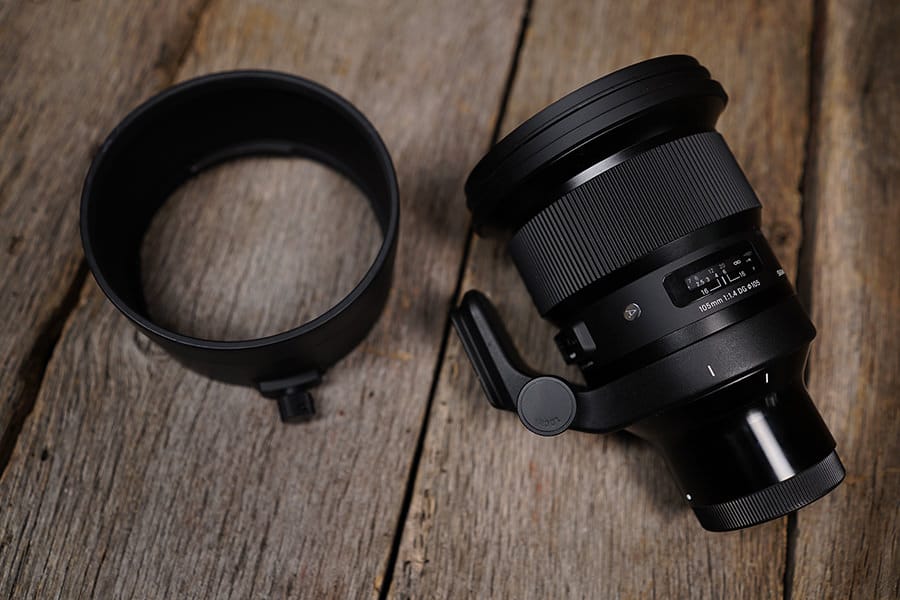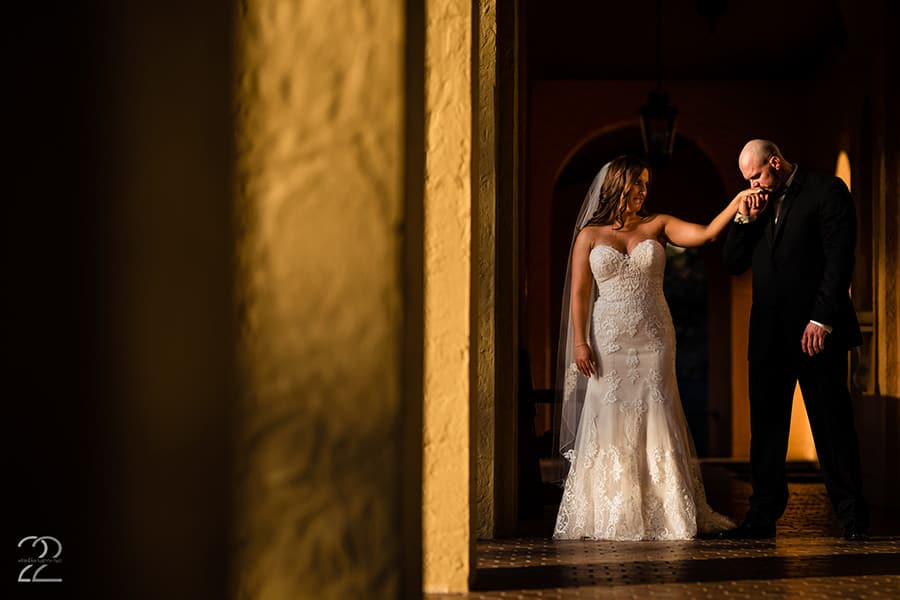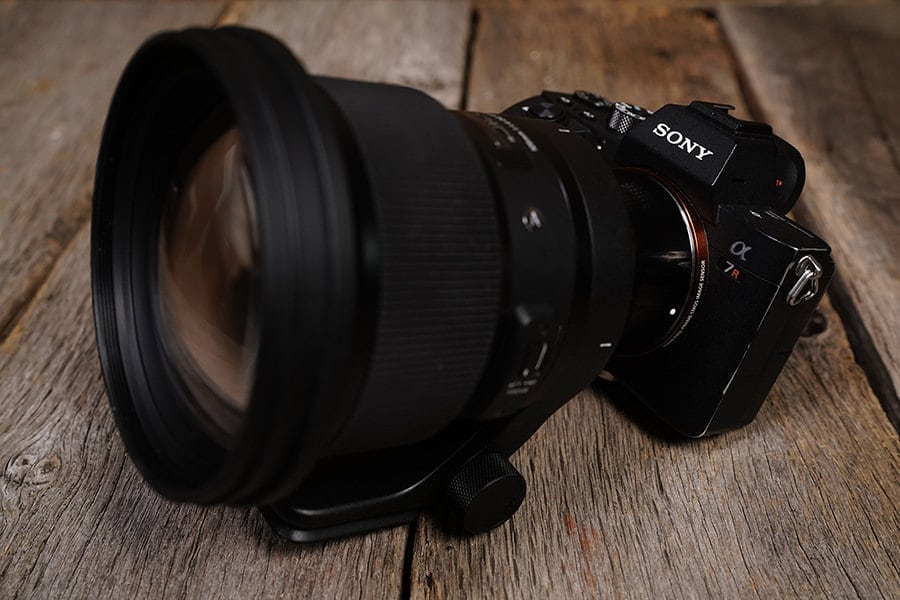
Sigma 105mm f/1.4 Art Lens Review (For Nikon)
The Sigma 105mm f/1.4 Art is a hefty lens. Is the image quality worth the extra muscle it'll take to haul it around in your bag? Read on to find out!
By Megan Allen
Sony is quickly developing their own arsenal of lenses, and Sigma is doing the same to ensure the ever-growing army of Sony shooters have what they desire in the lens department.
The one focal length that has been missing for me since my switch to Sony has always been that 105-135mm f/1.4-2.0 range… until now.
Enter the Sigma 105mm f/1.4 DG HSM Art. Touted by Sigma as their “bokeh master,” the Sigma 105mm f/1.4
lens has a big job to do, albeit a very specific one.
But how does it stand up to its counterparts from other brands, and is it worth the cost? Is it one of the best Sigma lenses of the year?
Read on to find out!
Sigma 105mm f/1.4 Stats
- Beautiful Bokeh
- Solid Build Quality
- Weather Resistant
- Ridiculously Sharp
- Perfect Length & Aperture for Portraits & Brenizer Methods
- Lacks Image Stabilization
- Ridiculously Large
- Heavy for Extended Use
- Long Focus Distance
• Retails for around $1.5k
• Available for Canon, Nikon, and Sony cameras
• Aperture range of f/1.4 to f/16
• Three FLD Elements, Two SLD Elements
• One Aspherical Element
• Super Multi-Layer Coating
• Hyper Sonic AF Motor, Manual Override
• Weather-Sealed, Protective Front Coating
• Rounded 9-Blade Diaphragm
• Removable Rotating Arca-Type Tripod Foot
• Compatible with Sigma USB Dock
The Unboxing

The Sigma 105mm f/1.4 Art is a premium product, packaged in a premium way
When I received my box from B&H with this beauty inside, I was instantly greeted with a surprising amount of heft.
Yes, I’d heard this was a big lens, but I hadn’t been fully prepared for just how BIG this thing would be.
Being a mirrorless shooter, I have become accustomed to a smaller load, and even attaching a 70-200mm feels clunky at this point.
As a former Nikon 200mm f/2 wielder, I never would have imagined that.
After the initial shock of the size wore off, I took a look at the accessories Sigma provided with the 105.
Inside was a strap for the lens case (which was a genuinely beefy thing, padded extremely well) and a screw-type lens hood that could double as a small salad bowl (according to my brother).
There was also a silicone band that swaps out with the Arca-Swiss tripod collar.
Overall, the packaging was nice, the carrying case is impressive, and I felt I was about to use a quality product.
RATING: 10/10
Ergonomics

The Sigma 105mm on a Sony A7RIII
| Sony A9
& Sony FE 35mm f/1.4 ZA
| 1/125 f/5 ISO 2000
Let’s get something straight: this lens is MASSIVE. Yes, it is as massive as everyone says, and it weighs in at a whopping 3.6 lbs (1.63 kgs), just over half the weight of Nikon’s heralded 200mm f/2.
That’s the lens I thought of as I connected the 105 to my suddenly extremely small Sony A9. I was curious to see how it felt to wield such a lens again, and whether it would be worth the heft.
Before we dive into the image quality, though, I do want to say that Sigma was smart to include an Arca-Swiss tripod collar with this behemoth.
While it didn’t bother me to hand-hold this lens, I can imagine many will value the tripod option it provides – especially those that aren’t of the barbell-curling, gym rat variety.
I found the tripod collar nice for simply managing the weight of the lens as I held it, as the base of it fit well in my hand.
For those who would prefer not to have it, however, Sigma did think ahead and also provided a silicone band that fits in the space that the collar resides, should you opt to remove it.
Along the left hand side of the lens you’ll find an AF/MF focus switch that’s easily accessible but built well enough to not accidentally move.
I also enjoyed being greeted with just the right amount of resistance on the manual focus ring. It helped me to avoid being overzealous and miss focus by wrenching the ring too quickly.
Overall, once you get over the fact that you’re now wielding a mini t-shirt cannon on the front of your camera body, it really is a nice lens and feels sturdily built.
RATING: 7/10 (docked because of size)
Build Quality

Sigma 105mm and lens hood | Sony A9
& Sony FE 35mm f/1.4 ZA
| 1/160 f/2.8 ISO 640
When you pull this lens out of the box and begin using it, you’re comforted by the sense that you’ve invested in quality glass.
I love the feel of brushed metal, which makes up most of the lens except for the back piece, which is smoother.
Sigma has definitely packed this monster full of great elements. Even so, I question how much of the bulk is truly necessary.
With the lens being weather-sealed, I didn’t fear taking it to Iceland with me, but its sheer size deterred me from hauling it in my backpack on the long hikes.
Nikon’s 105mm f/1.4 is just over 2 pounds, and Sony’s new 135mm f/1.8 is an ounce lighter than that.
So, with the Sigma coming in well over a pound heavier, I have to wonder what they’re feeding this beast in the warehouse before shipping it out.
All that being said, when you hold this lens, you know you’re holding a quality product. I just don’t know if we need SO MUCH of said quality product.
RATING: 9/10
Field Performance
No doubt the Sigma 105mm f/1.4 Art is a beauty, and it is inevitably a talking piece when I bring it out at weddings.
The hilarity of the reactions from wedding guests has varied. Some simply stare or nudge a loved one to take a look at the camera, while others straightforwardly make comments on the size of the lens.
If you invest in this lens and intend to take it out in public, plan on having a new talking point to manage.
In addition to managing conversations, you’ll have to manage the weight of the lens!
While using it in brief spurts won’t be too annoying, having it hit my side as I walked with it on my Holdfast MoneyMaker reminded me why I switched from DSLR cameras.
Even more than that, attempting to find a way to fit it in my gear bags was tricky in itself.
It simply doesn’t fit in my ThinkTank Airport Navigator unless I completely rearrange my compartments.
That’s something I’m stubborn about, as I have a system that works for everything but this one lens.

Sony A9 & Sigma 105mm f/1.4 Art | 1/125 sec f/2.2 ISO 50 | Edited with DVLOP Presets
Instead, I’ve taken to placing it in my HoldFast Sightseer Backpack. It takes up a fair amount of room in there.
All of that being said, I was absolutely thrilled to take this beauty into the wild and give it a go.
I took it to two weddings, one engagement shoot, and to Iceland, although it wasn’t obvious at first how I would factor it into shoots.
Since switching to Sony, I was forced to give up the longer telephoto primes due to no native options being available that suited my personal tastes.
If I used anything, I would adapt my Nikon 105mm f/1.4 to my Sony A9
with a Commlite Adapter
. While that worked, the autofocus was much slower.
Over the past year, I’ve given in to using the 85mm as my go-to “long” lens, and if I really needed reach, I would use the Sony 70-200mm f/2.8 – something I own, though I much prefer prime lenses.
So, I found myself no longer quite sure what to do with a true telephoto lens such as the Sigma 105mm at first, even though I desperately wanted to incorporate it.
Near the end of my time with this lens, it was like riding a bike. I found my groove with using the length again.
Despite its size and weight, I loved making images with this lens.
Combined with the superior eye AF of the Sony cameras, the Sigma 105mm
nailed focus perfectly even at f/1.4, something I wasn’t expecting.
Without image stabilization you have to be sure to use a faster shutter speed, but even then, the in-body stabilization of the Sony lineup compensates beautifully.
If using either Nikon or Canon, though, this is a consideration to keep in mind. Another thing to note is that this lens needs quite a bit of space to focus.
I wouldn’t even attempt to use this during a processional unless the aisle was a respectable distance, simply because I’d find myself with those walking down the aisle too close to me to focus.

Sony A9 & Sigma 105mm f/1.4 Art | 1/1250 f/2.2 ISO 50 | Edited with DVLOP Presets
Keeping that in mind, if you have the space to use it in a professional situation, you’ll be quickly rewarded with some of the most beautiful falloff to bokeh goodness I’ve ever seen from a lens.
It gives you a great 3D feel.
Overall, the Sigma 105 and the Sony A9 is a deadly combo. I found myself reluctantly falling in love with it the more I used the lens.
It reminded me how much I truly love the compression of a telephoto prime, and how much I missed my Nikon 105mm as a native lens.
It was a joy to have a telephoto again. My overall impression is this: it’s a speciality lens, it’s a pain in the butt to haul around, but it makes such gorgeous images that you honestly don’t care.
You’ll carry it because of how beautifully everything turns out.
RATING: 8/10 (size, again, docks points)
Image Quality
Here’s where things get wild. I’ve used multiple Sigma lenses on multiple camera platforms, dating way back to when I shot on Canon.
When I used the Sigma ART series on Canon, the results were superb; tack sharp, gorgeously vibrant colors, fast focus.
I couldn’t get enough of them, so much so that when I switched to Nikon, I opted for both the Sigma 35mm and 50mm ART
lenses over the Nikon variations.
Oh, what a misstep that was. I quickly found myself battling extremely front- or back-focused images, no matter how much calibration I attempted.
I gave in and bought the Sigma calibration dock, which wound up doing nothing to solve the problem.
I was frustrated, and let those ART lenses go in favor of lighter, more reliable Nikon f/1.8 versions…something I’d never imagined doing.
Needless to say, I felt a bit of trepidation as I dipped my toes back into the Sigma waters, but I was pleasantly surprised. No more front- or back-focused images.
Instead, everything was tack sharp on my Sony, even wide open – just like it was on Canon!
Colors are a tad muted in comparison to Sony native glass, but extremely easy to push in post to taste. Then again, I prefer extremely bold colors, so Sigma’s colors may be spot on for most everyone else!
There’s minimal chromatic aberration—so much so, that I was only once able to discern any at all, though I’m not a pixel peeper myself.
Overall, the image quality is beyond impressive, and I am falling in love with the 105 length all over again.
RATING: 10/10
Sigma 105mm f/1.4 Art Sample Images
Check out these sample images taken with the Sigma 105mm f/1.4 Art.




Sigma 105mm f/1.4 Art | Final Verdict

Sigma 105mm on Sony A7RIII
| Sony A9
& Sony FE 35mm f/1.4 ZA
| 1/160 f/2.8 ISO 640
The Sigma 105mm f/1.4 Art is a massive lens. It’s cumbersome, it’s kind of a pain to lug around… but it makes such incredibly beautiful images that you find yourself just not caring about the extra muscle it takes.
Except for extreme low light situations, in which it slows down a hair, it’s quick to focus. The falloff is great, the images are tack-sharp, and the bokeh is stunning. I really can’t get enough of the look this lens renders.
It’s a focal length I’ve missed in my lineup, and it’s exciting to see it back in the arsenal.
If you’re willing to deal with the heft, it’s a great bang-for-your-buck lens. You can spend $600-800 more for native lenses if you’d like, but Sigma has made an incredibly compelling case for this lens.
Bottom line: if you’re on the hunt for a mid-length telephoto lens with great depth of field, you won’t be disappointed by the Sigma 105mm.
Are there a few cons? Sure.
Am I keeping this lens in my bag? Absolutely… and I can’t wait to use it more in the future!
















